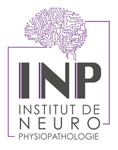Neurotensin and Neurotensin Receptors in Stress-related Disorders: Pathophysiology & Novel Drug Targets
Résumé
Neurotensin (NT) is a 13-amino acid neuropeptide widely distributed in the CNS that has been involved in the pathophysiology of many neural and psychiatric disorders. There are three known neurotensin receptors (NTSRs), which mediate multiple actions, and form the neurotensinergic system in conjunction with NT. NTSR1 is the main mediator of NT, displaying effects in both the CNS and the periphery, while NTSR2 is mainly expressed in the brain and NTSR3 has a broader expression pattern. In this review, we bring together up-to-date studies showing an involvement of the neuroten- sinergic system in different aspects of the stress response and the main stress-related disorders, such as depression and anxiety, post-traumatic stress disorder (PTSD) and its associated symptoms, such as fear memory and maternal separation, ethanol addiction, and substance abuse. Emphasis is put on gene, mRNA, and protein alterations of NT and NTSRs, as well as behavioral and pharmacological studies, leading to evidence-based suggestions on the implicated regulating mechanisms as well as their therapeutic exploitation. Stress responses and anxiety involve mainly NTSR1, but also NTSR2 and NTSR3. NTSR1 and NTSR3 are primarily implicated in depression, while NTSR2 and secondari- ly NTSR1 in PTSD. NTSR1 is interrelated with substance and drug abuse and NTSR2 with fear memory, while all NTSRs seem to be implicated in ethanol consumption. Some of the actions of NT and NTSRs in these pathological settings may be driven through interactions between NT and cortico- trophin releasing factor (CRF) in their regulatory contribution, as well as by NT’s pro-inflammatory mediating actions.
| Origine | Accord explicite pour ce dépôt |
|---|
